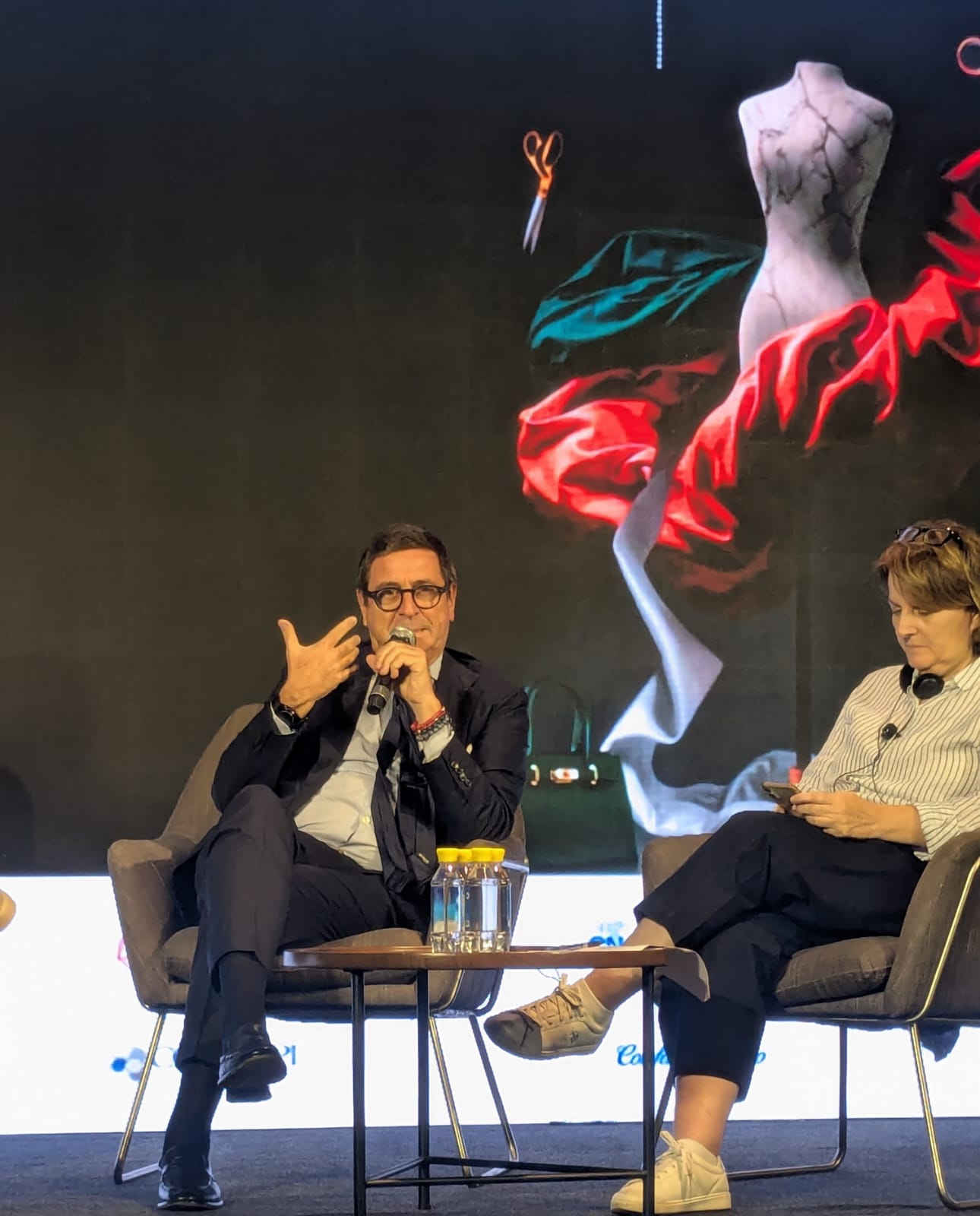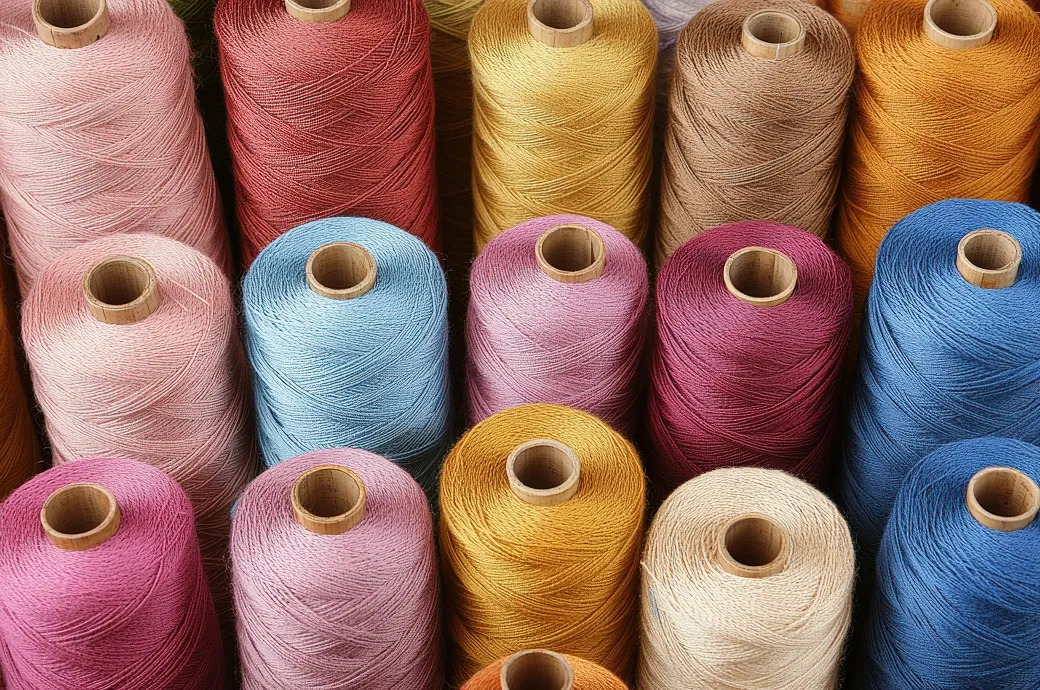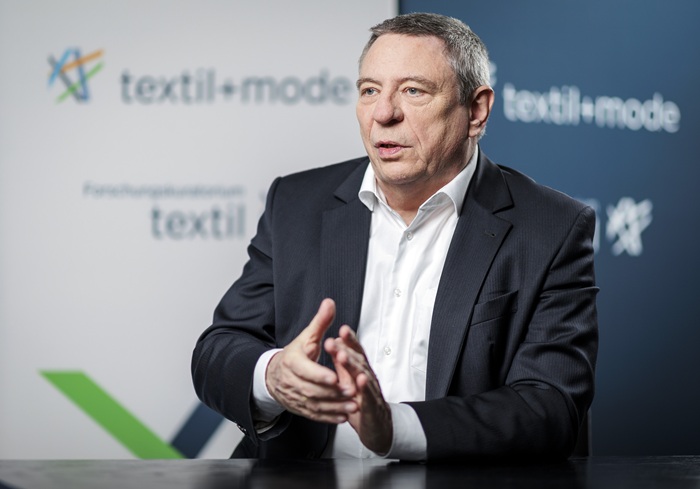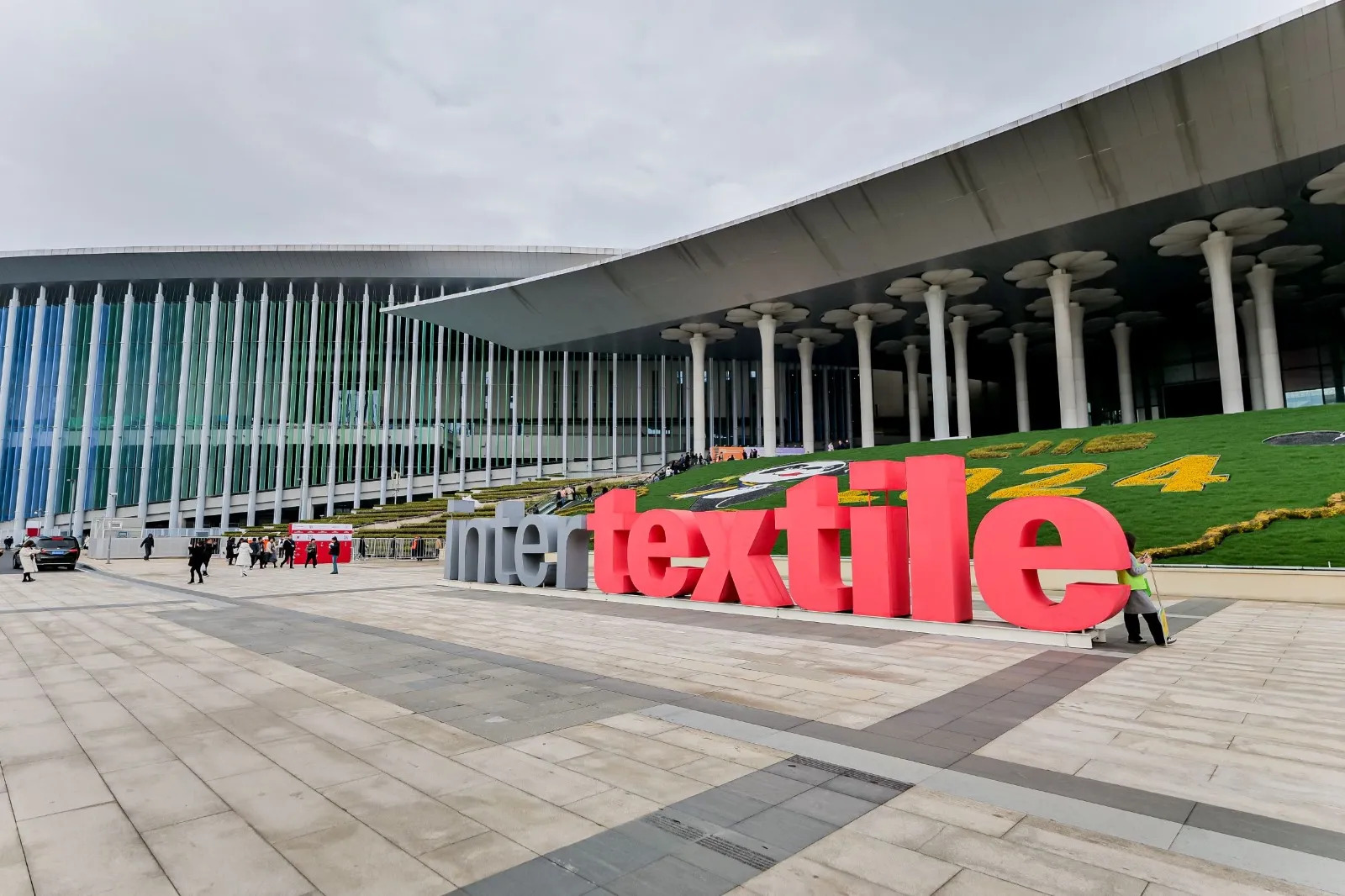FW

Italy, renowned for its exquisite fashion, design, and textile machinery, is setting its sights on India, a land rich in cotton and textile traditions. With a shared history intertwined with the ancient Silk Route, these two nations are now embarking on a new journey – the ‘Cotton Route’ – to unlock the immense potential of their partnership in the fashion, apparel, and textile sectors. The 'Cotton Route' initiative will further strengthen the historical ties between India and Italy and unlock the immense potential of our partnership in the textile sector," opines Piyush Goyal, Union Minister of Commerce and Industry.
Budding partnership
The Silk Route, an ancient network of trade routes, connected Europe and Asia for centuries, with both Italy and India playing an important role. This shared history has laid the groundwork for a strong relationship built on cultural exchange and commercial cooperation. What’s more both countries have complementary strengths. Italy excels in design, technology, and branding, while India boasts a vast pool of skilled labor, abundant raw materials, and a thriving domestic market. This creates a fertile ground for collaboration and mutual growth. Add to it the recent visit of Adolfo Urso, the Italian Minister for Business and 'Made in Italy', to India underscores the commitment of both nations to strengthen their economic ties. The 'Cotton Route' initiative, announced during the visit, aims to boost trade and investment in the textile sector. "Italy can become a production hub for Indian access to Europe, vice versa India can become a production hub for Italian companies' entry into its domestic and Asian markets," says Adolfo Urso, Italian Minister for Business and 'Made in Italy'.
In fact, Italian brands are already well established in India. For example. Benetton, the Italian fashion brand, has a strong presence in India with over 800 stores. The company sources a significant portion of its raw materials from India and has established manufacturing facilities in the country.
The potential areas of growth are numerous. First there is a lot of scope for joint ventures in manufacturing. The Italian Trade Agency (ITA) has been actively promoting collaboration between Italian and Indian companies in the textile sector. ITA has organized several trade fairs and B2B meetings to facilitate partnerships and joint ventures. Indeed, combining Italian design expertise with India's manufacturing capabilities can lead to the creation of high-quality apparel and textiles for both domestic and international markets.
Then there is the whole aspect of technology transfer and skill development. Italian companies can share their advanced technology and know-how with Indian partners, fostering innovation and upgrading skills in the Indian textile industry. Both countries can also collaborate on promoting sustainable practices in the fashion industry, such as using organic cotton, reducing waste, and ensuring fair labor standards. And Italian brands can leverage India's growing middle class and its vibrant fashion scene to expand their market reach.
Table: Data highlights India-Italy
|
Indicator |
Italy |
India |
|
Textile and apparel exports (2021) |
$55.7 billion |
$44.4 billion |
|
Global market share in textiles and apparel (2021) |
3.80% |
4.20% |
|
Growth rate of textile and apparel industry (2022-2027, projected) |
3.50% |
8.10% |
The moot point is that the partnership between Italy and India in the fashion, apparel, and textile sectors holds immense promise. By leveraging their complementary strengths and fostering collaboration, these two nations can create a vibrant and sustainable ecosystem that benefits both economies and contributes to the growth of the global fashion industry. The 'Cotton Route' initiative is a testament to their shared vision and commitment to weaving a future together, thread by thread.
Kraig Biocraft Laboratories a leader in spider silk-based fibers, has achieved a major milestone by creating a new transgenic silkworm inspired by the Darwin’s bark spider (Caerostris darwini).
This advancement marks a leap forward in the production of high-performance recombinant spider silk, which is known to be over 10 times tougher than traditional para-aramid fibers used in bulletproof vests and other high-strength applications.
By incorporating the genetic elements of Darwin's bark spider silk into its proprietary silkworms, Kraig Labs has developed a scalable system for producing this incredibly tough material.
The new transgenic combines the strength and elasticity of the spider silk with the efficiency of traditional silkworm silk production, enabling the company to pursue commercial-scale production.
Kim Thompson, Founder and CEO, emphasized that this breakthrough showcases Kraig Labs commitment to advancing material science by leveraging nature's best designs. COO Jon Rice expressed optimism for 2025, highlighting ongoing advancements and the company's growing production capacity.
This innovation strengthens Kraig Labs position as a leader in sustainable spider silk-based super materials with vast applications across textiles, defense, medical, and industrial sectors.
Pili, Orta, and Citizens of Humanity debut biobased indigo denim, advancing sustainable fashion with innovative, eco-friendly dyeing solutions.
A French innovator in biobased dyes and pigments, Pili has entered into a groundbreaking partnership with Turkish denim mill Orta and California-based premium denim brand Citizens of Humanity for the commercial debut of garments dyed with Pili’s biobased indigo. The first of these garment pieces will be launched in January 2025 as part of the Spring 2025 collections from Citizens of Humanity and AGOLDE.
Pili produced its first tons of bio-based indigo dye in 2024. This achievement enabled the company to create tens of thousands of sustainable denim items and marks a critical step in its mission to decarbonize the denim industry.
Combining fermentation and organic chemistry, Pili’s innovative dyeing process offers a sustainable, high-performance alternative to petrochemical dyes. This approach dramatically reduces the need for toxic chemicals and fossil-based resources, with the potential to lower CO2 emissions by up to 50 per cent. Pili’s color production follows standardized Life Cycle Assessments (LCAs) to rigorously measure and minimize environmental impact.
Pili’s biobased indigo performs on par with traditional petrochemical indigo and seamlessly integrates into existing dyeing processes without requiring additional investment in equipment. This innovation addresses the growing demand for sustainability, traceability, and decarbonization, says Jérémie Blache, CEO, Pili.
The partnership incorporates regenerative cotton and biobased indigo, creating one of the industry’s most sustainable products. This collaboration represents a pivotal step towards a more regenerative future, states Amy Williams, CEO, Citizens of Humanity Group.
Looking ahead, Pili plans to extend its bio-based pigment innovations into inks, paints, and polymers, accelerating efforts to decarbonize the color industry and revolutionize everyday products sustainably.
Laura Weir appointed BFC CEO, succeeding Caroline Rush, to drive British fashion growth, sustainability, and global influence.
The British Fashion Council (BFC) has appointed Laura Weir as its new Chief Executive Officer, effective April 28, succeeding Caroline Rush. Currently serving as the Executive Creative Director at Selfridges, Weir has extensive experience in fashion and media, including previous roles at ES Magazine, Elle UK, and Drapers.
Commending West’s strategic vision and her comprehensive understanding of the industry’s complexities, David Pemsel, Chairperson, BFC, emphasized on her ability to drive transformative initiatives that will shape the BFC’s future both in the UK and internationally.
Assuming the position at a critical time for British fashion, Weir says, she looks forward to working with the BFC team to champion culture and creativity, driving growth for British fashion on both a national and global scale. In her new role, plans to prioritize supporting emerging and established designers, strengthening the pipeline of British creative talent, and increasing the industry’s global influence.
Weir also emphasized on her commitment to tackle pressing issues like environmental sustainability, representation, and inclusion while fostering partnerships with both industry leaders and government bodies. Under her leadership, BFC will continue to focus on responsible growth through community engagement, innovation via the Institute of Positive Fashion, and global promotion through marquee events like London Fashion Week and the Fashion Awards.
Her appointment follows Caroline Rush’s remarkable 15-year tenure, during which she transformed the BFC into a strong and profitable organization. Rush successfully navigated significant challenges, including Brexit and the pandemic, helping the BFC achieve a turnover exceeding £12 million in the last fiscal year.
Reaffirming the Indian government’s commitment to expand its current textile market, Giriraj Singh, Union Minister of Textiles, affirms, the country will work towards increasing the industry’s market size to $300 billion by 2030. Additionally, it will also employ 60 million people in the textile value chain, he announced while inaugurating the new permanent campus of the Indian Institute of Handloom Technology in Fulia, Nadia, West Bengal.
Spanning 5.38 acre, the state-of-the-art campus has been constructed with an investment of 75.95 crores. It is equipped with all modern infrastructural facilities including smart classrooms, a digital library and advanced testing laboratories. The campus aims to serve as a model learning center and a Center of Excellence in handloom and textile technology, catering to students from West Bengal, Bihar, Jharkhand, and Sikkim.
Emphasizing on the government’s vision to expand India’s textile market to $300 billion, Singh highlights 11.56 per cent Y-o-Y growth in textile exports in October 2024. During the month, India’s apparel exports also increased by 35.06 per cent Y-o-Y to $1.23 billion, he adds. Meanwhile cumulative textile and apparel exports increased by 19.93 per cent in October 2024 compared to October 2023.
From Apr-Oct 2024, India’s textiles exports grew by 4.01 per cent compared to the same period in the previous year, while apparel exports registered an 11.60 per cent growth. Government’s investment promotion agency, Invest India predicts, India’s total textile exports will reach $65 billion by FY26.
Minister Singh expressed optimism, citing Prime Minister Narendra Modi’s leadership as a driving force behind the industry’s success, with continued growth in exports and technological advancements positioning India as a global leader in textiles.
Increasing demand for clothing alongwith a fall in inflation in major export destinations led to a spike in garment exports from Bangladesh during 2024. As per a report by the Export Promotion Bureau (EPB), apparel shipments from the country icreased by 7.23 per cent Y-o-Y to $38.48 billion during the fiscal.
Following the fall of Sheikh Hasina’s government on August 5, Bangladesh garment sector faced significant disruptions, including factory closures, production halts, and labor unrest. Protests, wage demands, and workplace discrimination fueled unrest, severely affecting shipments from July to October. However, gradually normalcy returned as factory owners accepted garment workers’ 18-point demands, including a 56 per cent wage hike.
Globally, persistent high inflation caused by the Russia-Ukraine war and its economic fallout dampened consumer demand initially. However, Western economies began rebounding in late 2024, with retail sales rising with inventories from previous years getting cleared in the US and Europe.
Garment exports faced fluctuations throughout the year. Shipments fell 6.62 per cent Y-o-Y in April to $2.38 billion and further by 10.48 per cent in June 2024. However, these began to recover again in September, with exports rising by 14.61 per cent to $3.01 billion. This growth continued through October, when exports increased by 22.80 per cent, In November 2024, Bangladesh’s garment exports grew by 16.25 per cent and in December they rose by 17.45 per cent rise to $3.77 billion.
Retail sales in key export markets, such as the US, also registered moderate growth. In November 2024, sales rose by 2.35 per cent Y-o-Y, according to the National Retail Federation (NRF). Buoyed by economic recover and lower retail sales, consumers seemed increasingly willing to spend, notes Matthew Shay, President, NRF,
Despite a challenging environment, Bangladesh’s garment industry adjusted its export target from $50 billion to $38.48 billion. Rising energy costs, volatile oil prices, and high interest rates affected smaller enterprises. Still, the confidence placed by international retailers on the country alongwith a devaluation in its local currency strengthened the industry’s resilience during the year.
Political stability and improved industrial relations will pave the way for further growth in exports, both in volume and value, opine Mohiuddin Rubel and Faruque Hassan, Former Leaders, BGMEA.
CCI boosts cotton procurement as prices fall below MSP; CITI proposes DBT scheme and stabilization fund for industry growth.
Acquiring around 70 per cent of daily arrivals, the Cotton Corporation of India (CCI) is set to purchase 25–35 per cent of India’s cotton production this season. This increased procurement comes as market prices dip below the Minimum Support Price (MSP), prompting government intervention.
India’s leading textile industry body, the Confederation of Indian Textile Industry (CITI) has proposed replacing the current procurement system with a Direct Benefit Transfer (DBT) scheme. This recommendation is a part of CITI’s suggestions for the Union Budget 2025–26, set to be presented by Finance Minister Nirmala Sitharaman on February 1, 2025.
Under the existing system, the government sets an MSP for cotton annually. When market prices fall below this rate, CCI steps in to purchase cotton directly from farmers at the MSP. The cotton is then stored in warehouses before being sold through open markets or auctions.
CITI’s proposed DBT scheme would allow farmers to sell cotton at prevailing market prices. If the selling price is below the MSP, the government would transfer the price difference directly to farmers’ bank accounts.
This approach would increase liquidity for farmers, enabling them to sell their produce without relying on government procurement. Additionally, it would reduce CCI’s financial burden and storage costs, benefiting the entire cotton supply chain.
So far this season, CCI has acquired 55 lakh bales of cotton, with total purchases expected to reach 100 lakh bales - accounting for over 35 per cent of the estimated output of 302 lakh bales (170 kg each). However, CCI’s aggressive buying has limited access to cotton for textile mills, which may face further difficulties as arrivals decline.
CITI has urged the government to ensure adequate cotton availability at globally competitive prices. Domestic cotton prices currently exceed international rates. CITI suggests compensating CCI for losses through subsidies, akin to those offered for other commodities.
To address price volatility, CITI recommends introducing a Cotton Price Stabilisation Fund Scheme. This initiative would offer mills 5 per cent interest subvention or loans at NABARD rates, recognizing cotton as an agricultural commodity.
Additionally, banks should extend the credit limit period for cotton procurement from three months to eight months, with a reduced margin money requirement of 10 per cent instead of 25 per cent.
These measures would enable mills to secure raw materials at competitive rates early in the season and mitigate price fluctuations during the off-season. Improved financial stability and access to cotton would allow mills to plan production schedules more effectively, fostering growth in the textile industry.
Gildan Activewear has once again secured its position in the Dow Jones Sustainability North America Index (DJSI North America), marking its 12th consecutive year of inclusion. This recognition highlights Gildan's leadership in sustainability, ranking the company in the 98th percentile of the Textiles, Apparel, and Luxury Goods industry, out of 189 companies assessed. Notably, Gildan is the only apparel manufacturing company to make the list.
"We are proud to be included in the DJSI North America again this year," said Glenn Chamandy, President and CEO of Gildan. "Sustainability has been a cornerstone of our business strategy for over two decades, and with our Next Generation ESG framework, we are paving the way for a more sustainable future for our people, communities, and the environment."
The Dow Jones Sustainability Indices (DJSI) serve as benchmarks for investors prioritizing companies with strong environmental, social, and governance (ESG) practices. Rankings are based on S&P Global’s Corporate Sustainability Assessment (CSA) scores, with the DJSI North America Index representing the top 20 per cent of the largest 600 North American companies in the S&P Global Broad Market Index excelling in ESG criteria.
Gildan's continued inclusion underscores its commitment to sustainable growth and long-term value creation for shareholders and stakeholders alike.
NEHHDC launches kargest Eri Silk Spinning Mill in Northeast India to boost sustainable textile production, employment, and local development with OEKO-TEX® certification.
The North Eastern Handicrafts and Handlooms Development Corporation (NEHHDC) has inaugurated the largest Eri Silk Spinning Mill in Northeast India.
Located at the Integrated Textile Park in Mushalpur, Assam, the mill was established with an investment of Rs 14.92 crore. Spanning 12,916 sq ft and equipped with 960 spindles, the facility has a daily production capacity of 461 kg. It was officially inaugurated by Pramod Boro, Chief Executive Member (CEM), Bodoland Territorial Region (BTR).
The state-of-the-art mill will provide direct employment to 375 individuals and indirectly support approximately 50,000 families. To meet its production needs, the facility requires 230 metric tons of Eri cocoons annually. Advanced machinery, including degumming units, hydro extractors, hot air dryers, pupa riders, cocoon openers, fiber cutters, balers, cheese and cone winders, TFO units, and reeling equipment, has been installed to ensure high-quality output.
Often referred to as ‘peace silk’ due to its cruelty-free extraction process, Eri silk is gaining popularity for its eco-friendly attributes. With the growing global demand for sustainable textiles, Eri silk is well-positioned to cater to these preferences. The mill’s primary objectives are to boost local cocoon production, enhance value through spinning and weaving, and create significant employment opportunities for the local community.
Highlighting the mill’s role in curbing the export of unprocessed Eri silk cocoons from the Northeast, Brigadier RK Singh (Retd), Managing Director, NEHHDC, says, by producing high-quality Eri yarn in cone and hank forms, the facility will improve price realization and meet the demand for dyed yarn in the handloom sector across all eight Northeastern states.
Bidyut Bikash Rajkonwar, Chief Operating Officer, states, NEHHDC earned the prestigious OEKO-TEX® Standard 100 certification for Eri Silk from Germany in 2024. Verifying the silk’s safety and sustainability, this certification reinforces the mill’s commitment to quality and positions it as a vital contributor to the region’s economic and social development.
Shiva Texyarn secures Rs 36.19 crore order from Indian Air Force for NBC Permeable MK V suits, showcasing technical excellence.
One of India’s leading textile manufacturers, Shiva Texyarn has bagged an order worth Rs 36.19 crore from the Indian Air Force, Ministry of Defence, Department of Military Affairs and Government of India to supply 16,000 pairs of Nuclear, Biological and Chemical (NBC) Suits, especially the Permeable MK V from January 3, 2025, to August 31, 2025.
A producer of technical textiles including home textiles, coated and laminated fabrics and other value-added goods in addition to cotton yarn, Shiva Texyarn holds numerous certifications including Five S (Workspace Management System), Oeko – Tex 100 Certification, WRAP Certification and Affiliation Certification (Textile Sector Skill Council).
The company has five divisions including a spinning mill, a lamination division and a garments division in Tirupur, a processing division in Erode and a coating division in Coimbatore.
In Q2 FY ’25, the company’s consolidated net profit increased to Rs 2.77 crore as against a net loss of Rs. 2.59 crore in Q2 FY ’24. Its net sales declined to 3.6 per cent Y-o-Y to Rs. 95.19 crore during the quarter.












